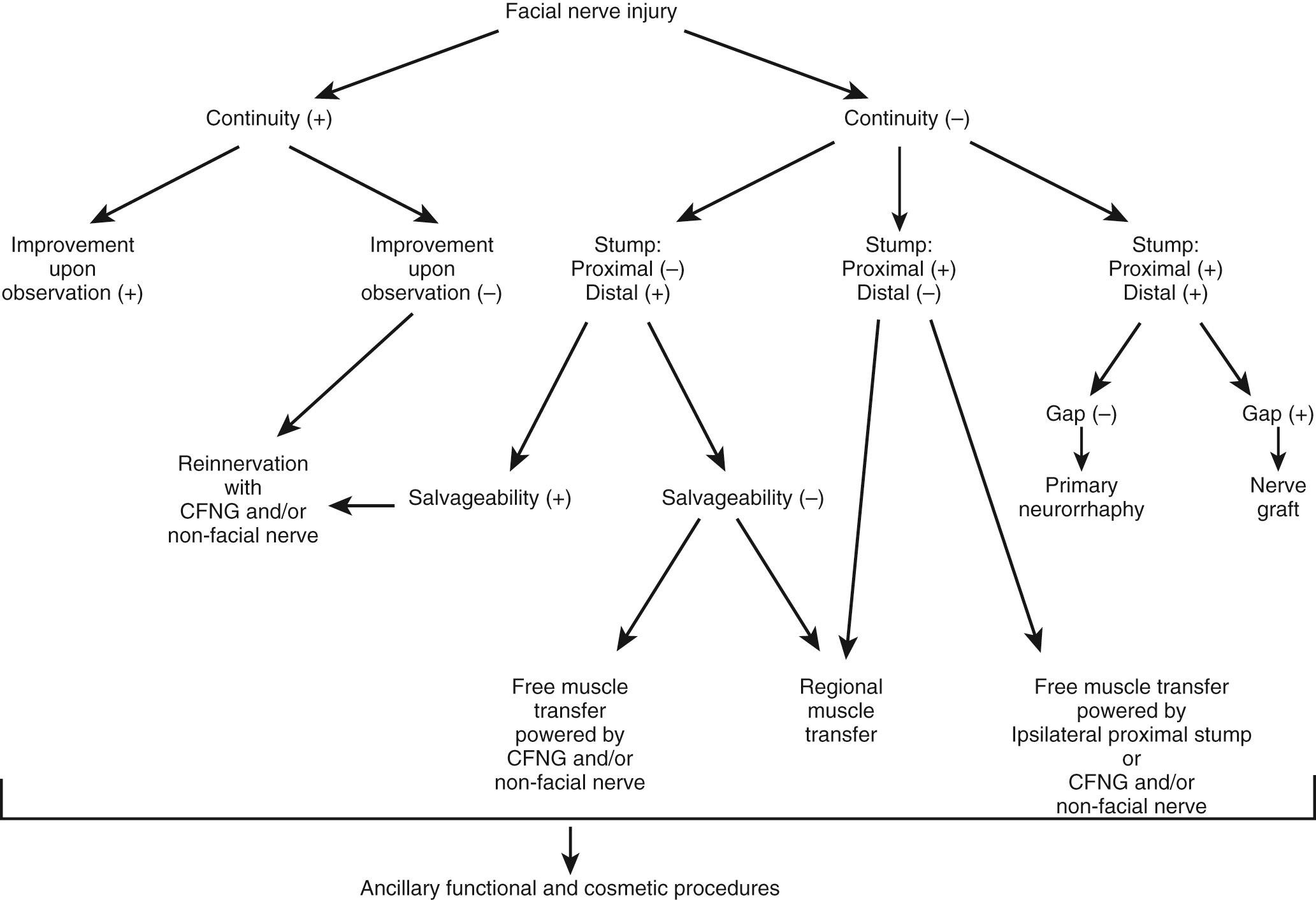Physical Address
304 North Cardinal St.
Dorchester Center, MA 02124
Facial paralysis is a debilitating disease process that poses significant physical and psychosocial impacts to patients. Facial paralysis resulting from salivary gland tumors can be due to the direct invasion of a malignant tumor, injury, or transection of the facial nerve during tumor removal. Sunderland classified nerve injury into five degrees :
1st degree injury is the temporary interruption of conduction at the site of injury.
2nd degree injury occurs when the axon is disrupted, and the distal portion undergoes Wallerian degeneration.
3rd degree injury is interfascicular injury, and the continuity of the endoneurial tube is lost. Axons are no longer confined to the endoneurial tubes, resulting in axon misrouting leading to synkinesis.
4th degree injury occurs when fasciculi are disrupted and disorganized. Regenerating axons are free to enter interfascicular tissue, leading to poor recovery.
5th degree injury indicates epineurial injury or transection of the nerve. Some regenerating axons may reach the distal stump depending on the distance between the nerve ends, but large numbers of the axons escape into the intervening tissues.
Satisfactory spontaneous recovery is expected with 1st-, 2nd- and 3rd-degree injuries. The 4th- and 5th-degree injuries result in a poorer outcome after repairing or cable grafting. During parotidectomy, anywhere along extracranial portion of the facial nerve can be affected, depending on the nature and location of tumor, dissection technique, and the extent of surgery. Among the facial nerve branches, the marginal mandibular nerve is more prone to injury, possibly due to its longer course, thinner diameter, and lack of interconnecting branches.
Prior to salivary gland surgery, the patient's facial function should be thoroughly and systematically examined in a zonal fashion. Areas of muscle weakness should be noted before surgery, as well as areas with signs of nerve irritation, including muscle twitching, fasciculation, or spasm. Photographs and video-recordings are essential for documentation and for comparison after the surgery; these are taken at rest and during volitional movements (brow elevation, gentle and full effort eye closure, blink, lip pucker, gentle and full effort smile, lower lip depression). Spontaneous and emotional smile can be elicited by showing a funny videoclip.
An ideal facial nerve grading system is currently lacking. The House–Brackmann (HB) scale is the most commonly used grading system worldwide. However, the inter-rater and intra-rater reliability is only fair. Moreover, it is unable to track changes during recovery. The revised version, HB II or Facial Nerve Grading Scale 2.0, is a regional scale that has a low inter-observer variability. However, it is not widely adopted. The Sunnybrook Facial Grading Scale is a regional weighted scale that is sensitive to subtle changes during recovery with high intra- and inter-observer reliability, and is the most widely used scale for rehabilitative therapists. The eFACE is an electronic facial assessment scale, introduced in 2015 by Banks et al., which comprises a clinician-graded visual analog scale that rates 15 facial features. It was demonstrated to have high inter-rater and intra-rater correlations and has strong correlation with the Sunnybrook facial grading scale.
Facial paralysis can be expected or unexpected. Expected facial paralysis is related to the resection of the facial nerve or its branches with the tumor, which should be included in the plan of tumor extirpation. Reconstruction should be immediate during operation as the distal stump will no longer be receptive to stimulation after 72 h. Otherwise, it would not be able to accurately identify the muscle that the distal branches innervate thereafter. Various reconstructive options are discussed in this chapter ( Fig. 50.1 ).

Periocular management is crucial in the treatment of facial paralysis to prevent exposure corneal keratopathy. Upper lid stretching is a non-surgical method for eye closure. However, it has to be done four times a day. Lubricating eye drops and taping during sleep are essential for corneal protection. A moisture chamber and scleral lens are alternatives to keep the cornea moist and protected.
When a prolonged recovery is expected, a temporary color-matched external weight can be taped onto the upper lid. However, this may not be aesthetically pleasing, and the result is suboptimal in patients with upper lid skin laxity. Alternatively, a thin profile platinum implant can be placed into the upper eyelid. This can easily be removed once the lid function spontaneously returns. Temporary tarsorrhaphy is a simple and yet most predictable option for lagophthalmos, but it is less aesthetically favorable.
Become a Clinical Tree membership for Full access and enjoy Unlimited articles
If you are a member. Log in here